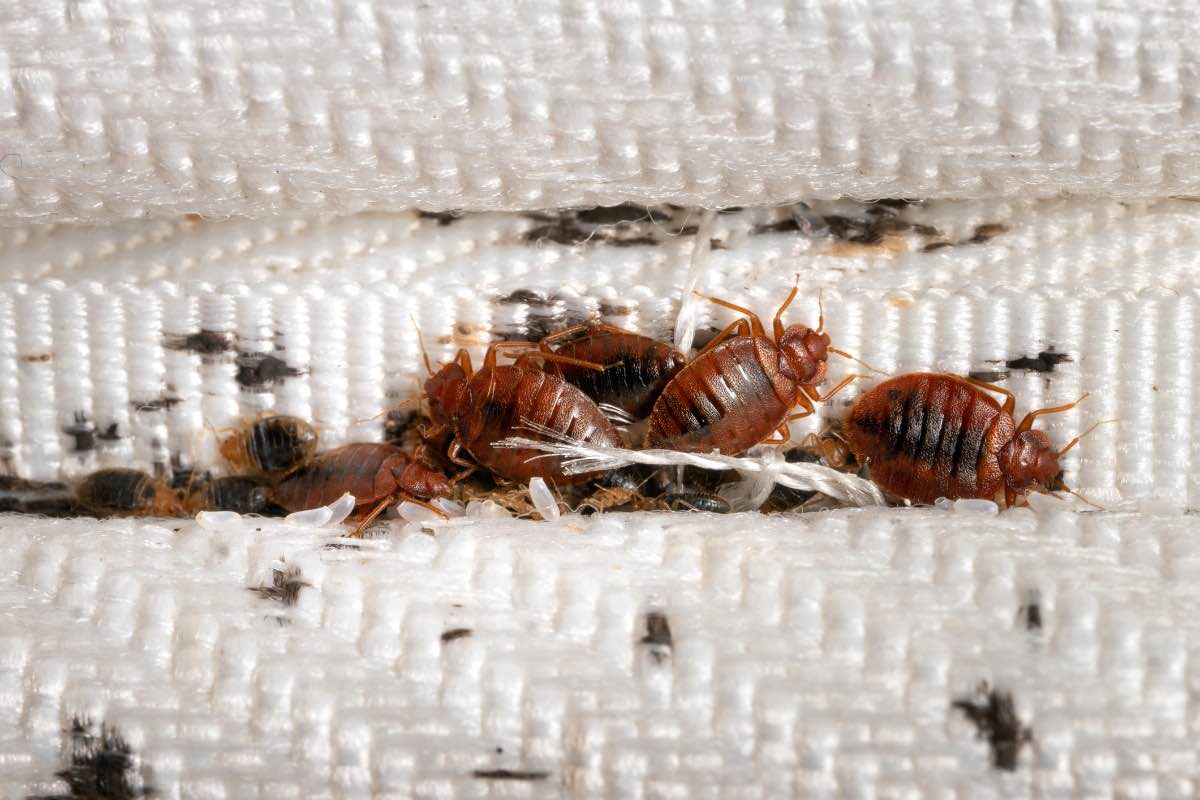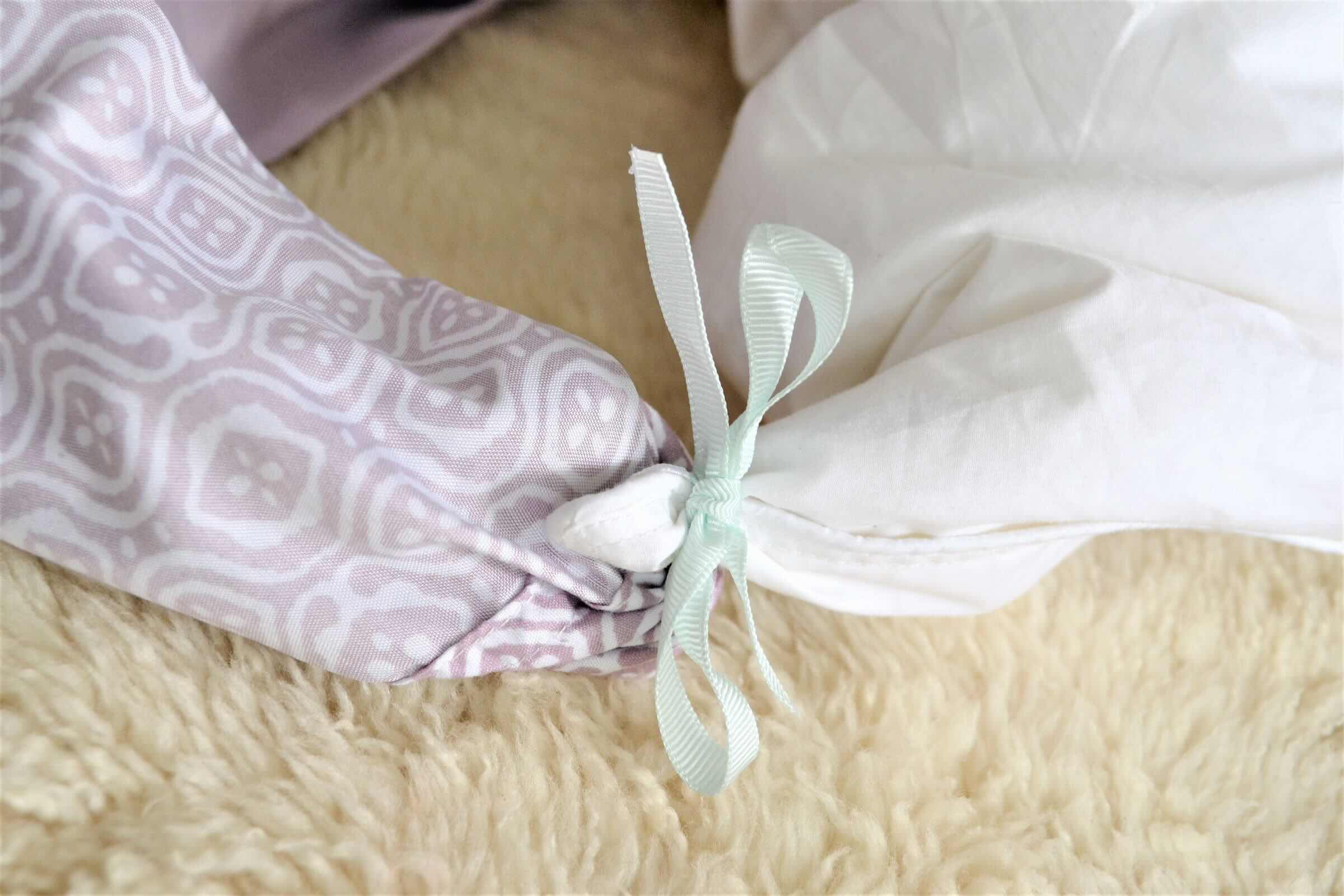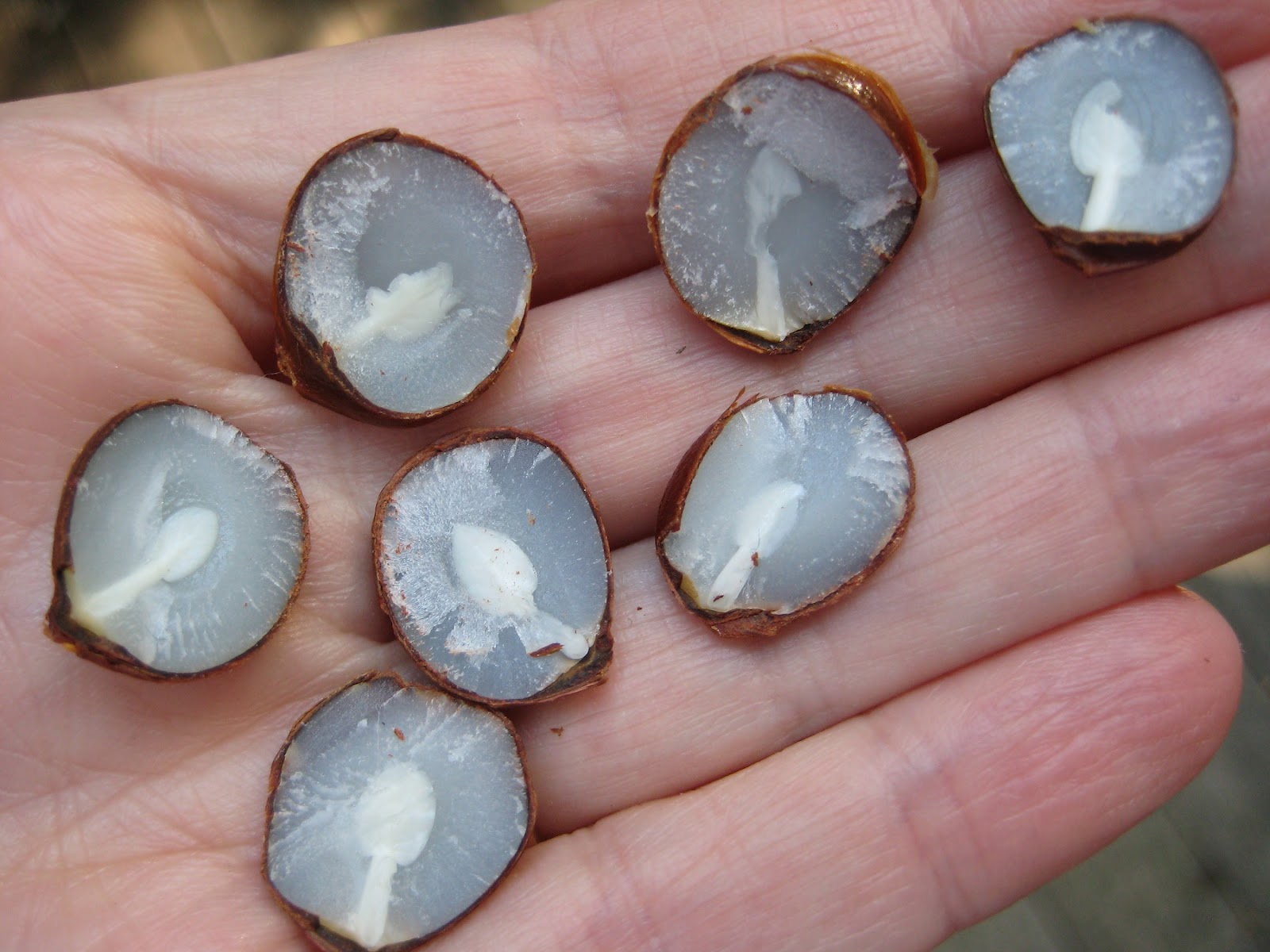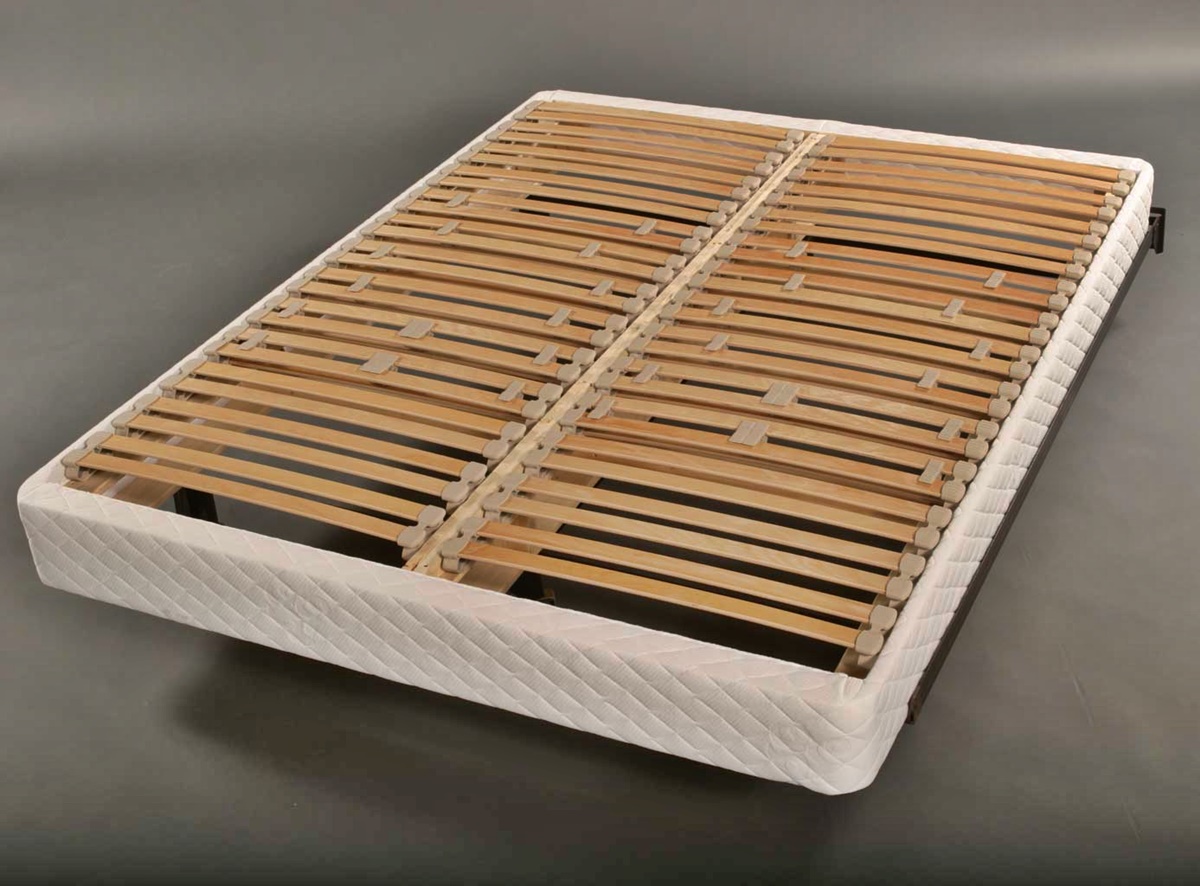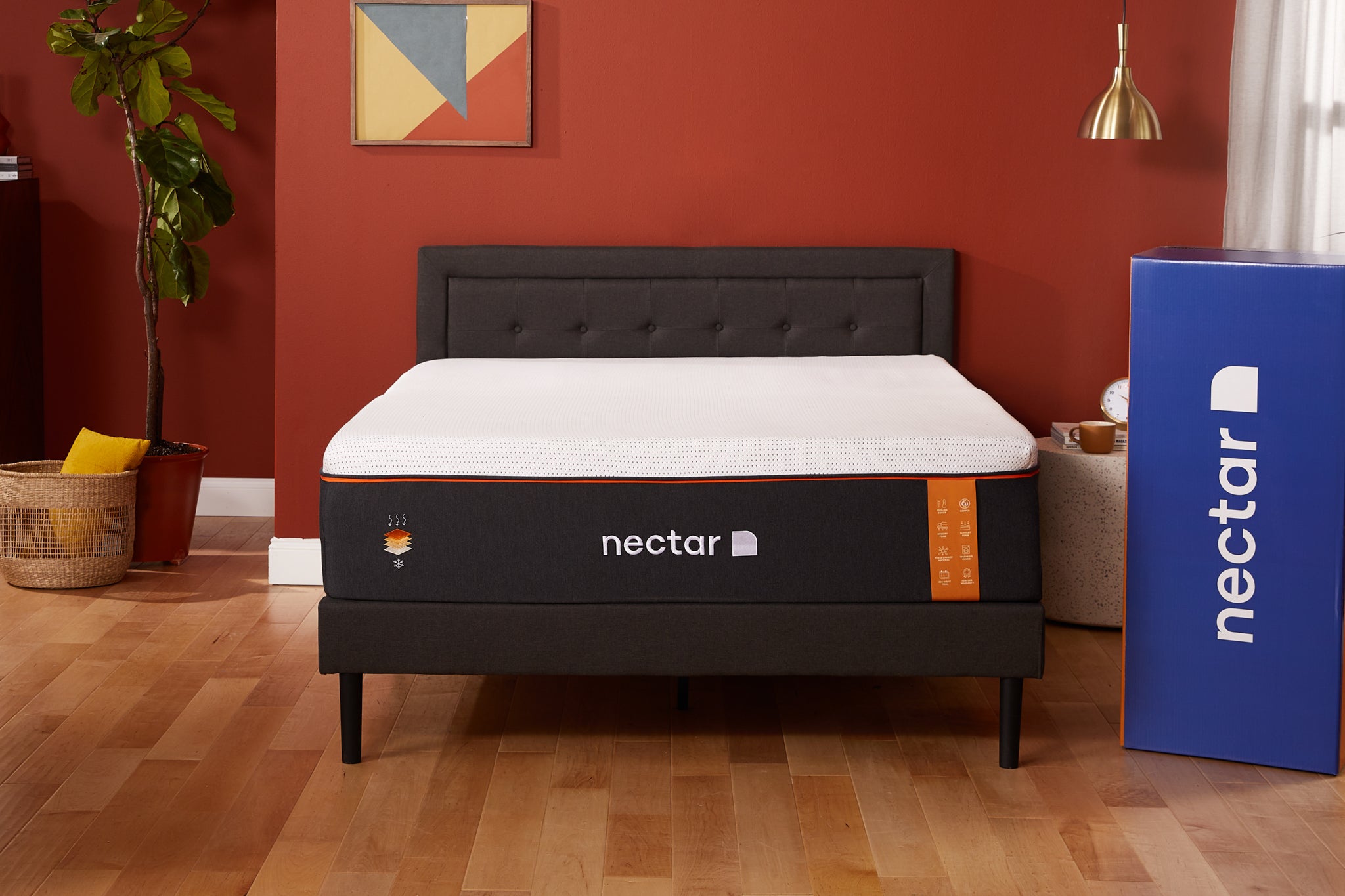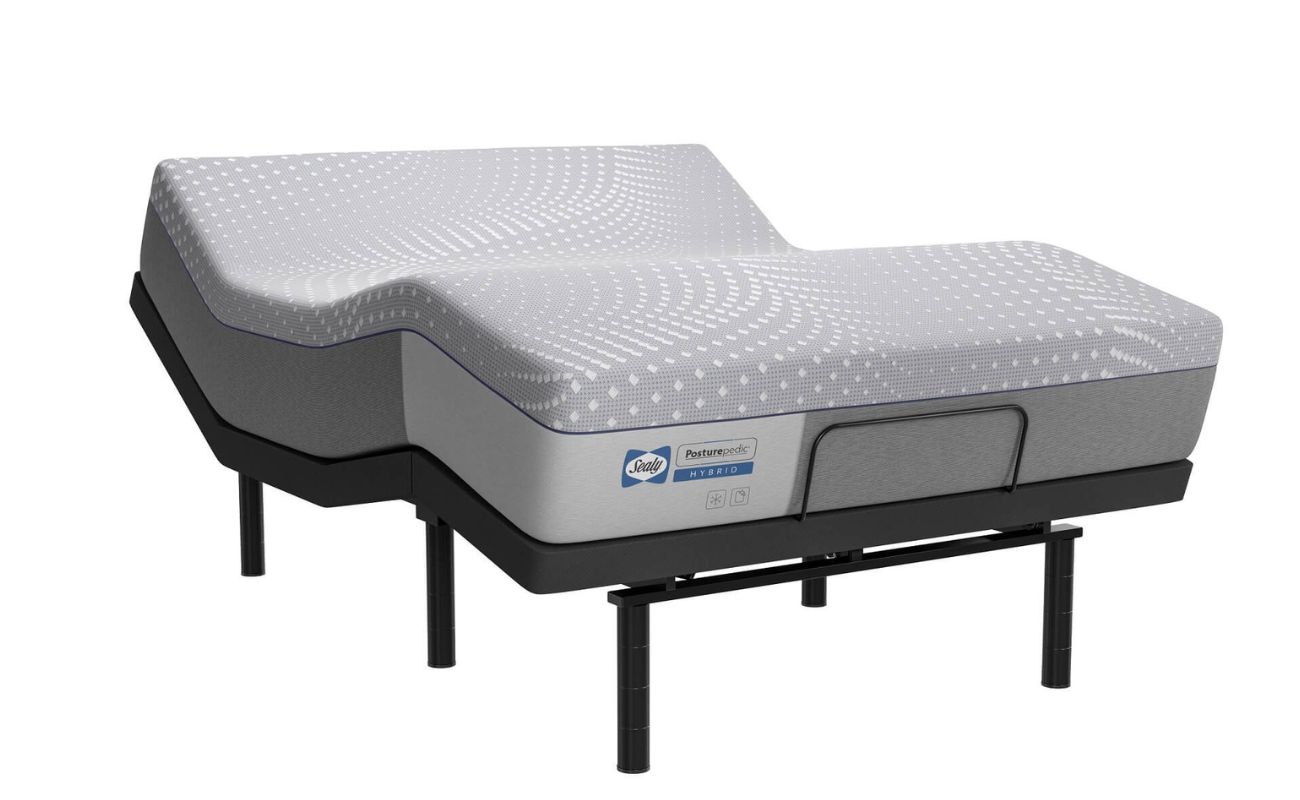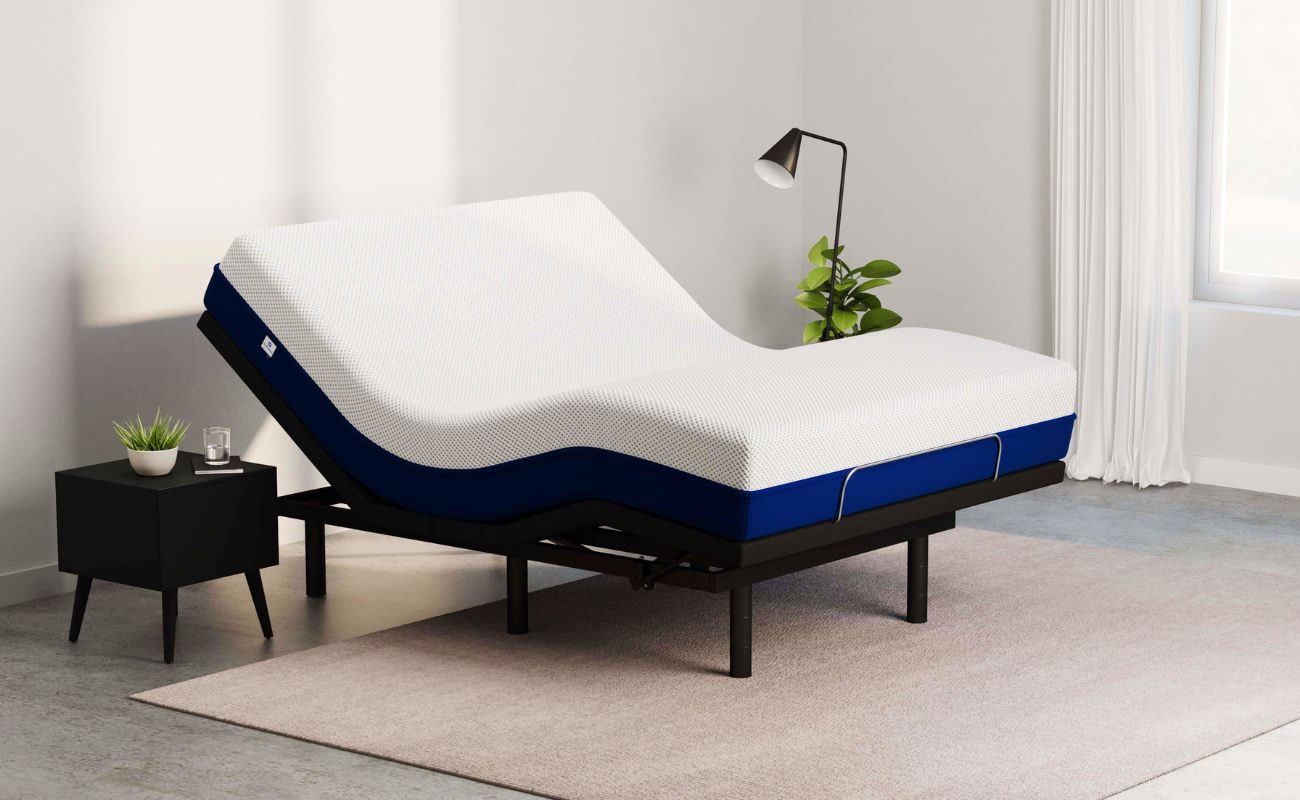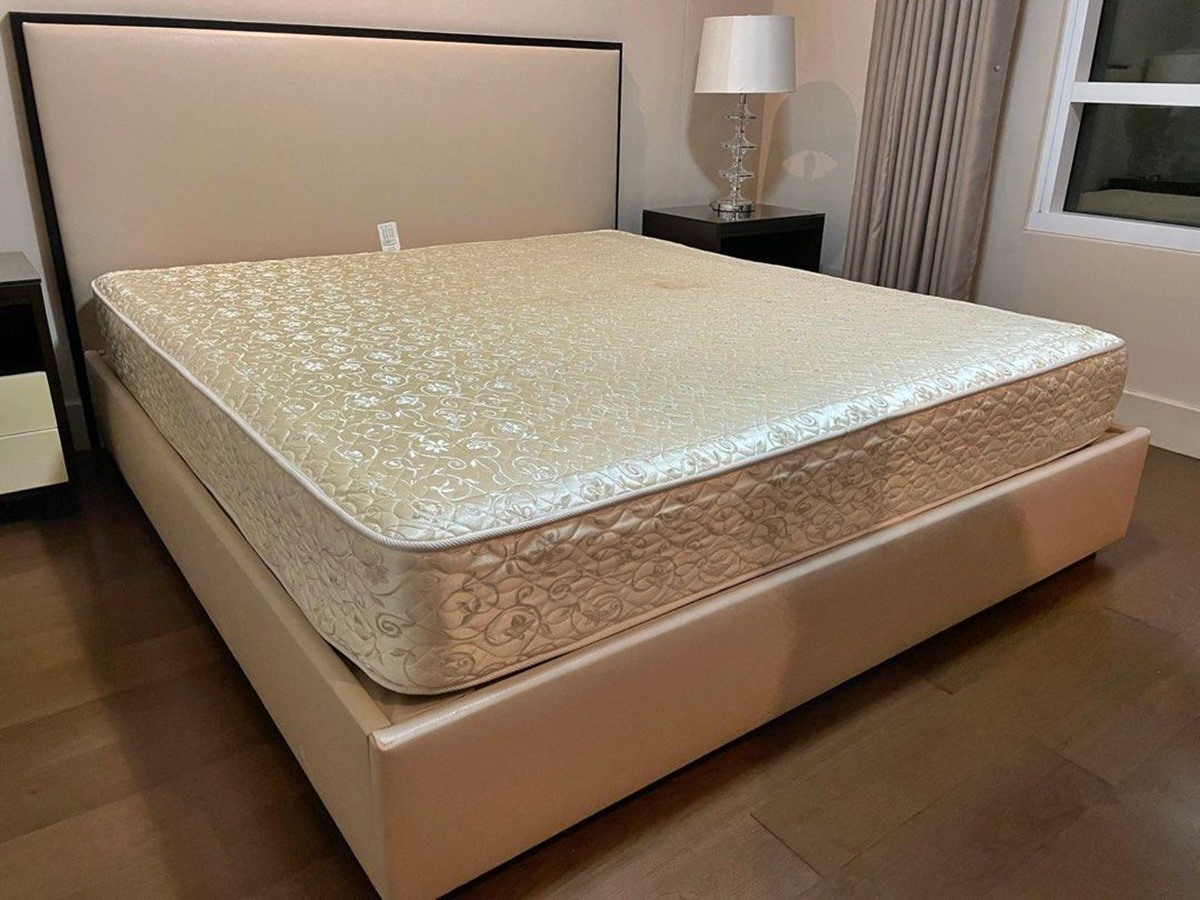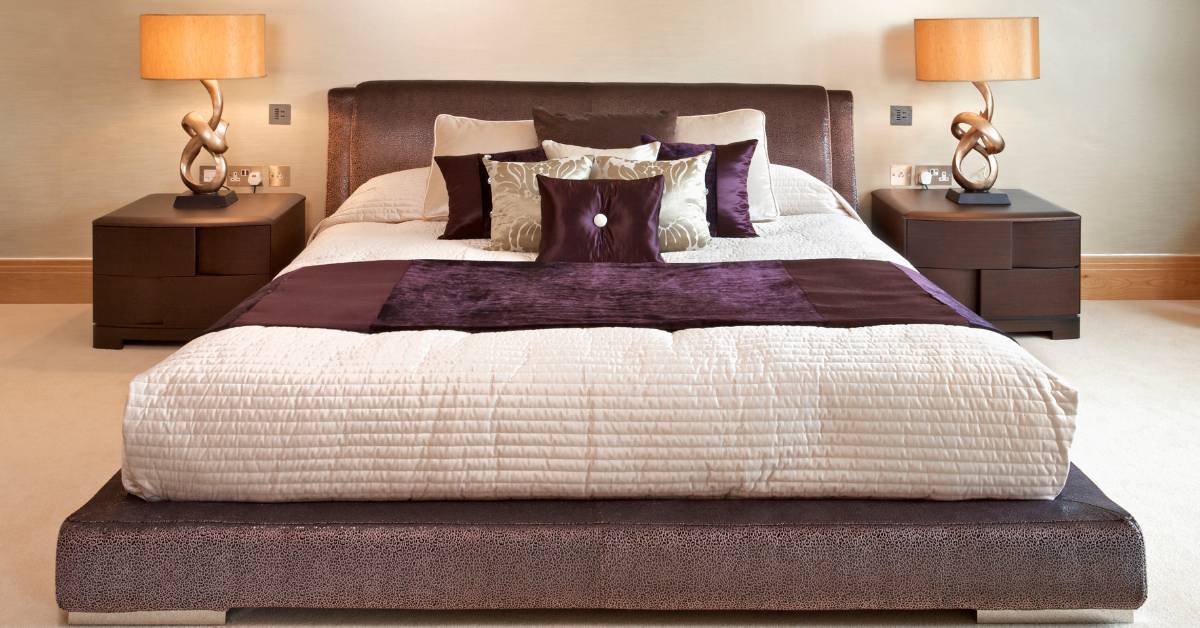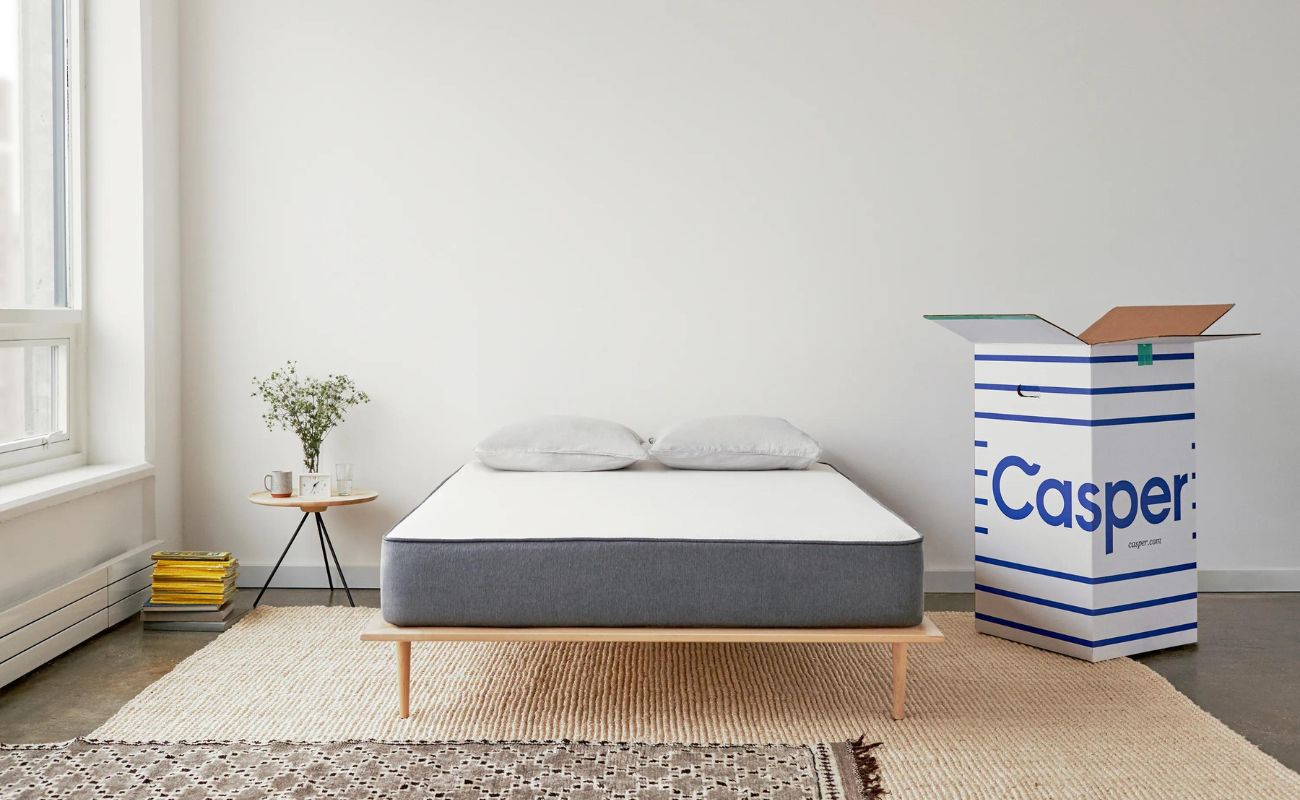Home>Furniture>Bedroom Furniture>What Is Inside A Mattress


Bedroom Furniture
What Is Inside A Mattress
Modified: December 7, 2023
Discover the inner components of a mattress and find out why bedroom furniture plays a crucial role in ensuring a restful sleep. Explore now!
(Many of the links in this article redirect to a specific reviewed product. Your purchase of these products through affiliate links helps to generate commission for Storables.com, at no extra cost. Learn more)
Introduction
Choosing the right mattress is crucial for a good night’s sleep and overall well-being. But have you ever wondered what goes into making a mattress? What components are hidden beneath its plush exterior? Understanding the anatomy of a mattress can help you make an informed decision when shopping for a new one.
In this article, we will take a deep dive into the world of mattresses and explore the various components that make them up. From the mattress cover to the support core, each element plays a vital role in providing comfort, support, and durability.
So, if you’re ready to unravel the secrets of what lies inside a mattress, let’s get started!
Key Takeaways:
- Unravel the secrets of mattress construction to make an informed choice. From the plush cover to the supportive core, each component contributes to comfort, support, and durability.
- Look for features like edge support and fire barriers when choosing a mattress. Understanding the components helps you prioritize your preferences for a restful and safe sleep environment.
Read more: What Is An Inside Balcony Called
Components of a Mattress
A mattress is a complex structure that consists of several components working together to provide you with a comfortable and supportive sleeping surface. Let’s take a closer look at the key elements that make up a mattress:
- Mattress Cover: The outermost layer of the mattress is the cover. It is typically made of fabric, which can vary in material and feel. The cover not only adds a decorative touch but also acts as a protective barrier for the inner layers of the mattress.
- Comfort Layers: Beneath the mattress cover, you’ll find the comfort layers. These layers are responsible for determining the feel of the mattress and providing pressure relief. Common materials used in comfort layers include memory foam, latex foam, polyfoam, or a combination of these. The thickness and composition of the comfort layers can vary across different mattress models.
- Support Core: The support core is the main structure of the mattress that provides overall support and durability. It is typically made of innerspring coils, foam, or a combination of both. Innerspring mattresses use metal coils to provide support, while foam mattresses use high-density foam or pocketed coils. The support core plays a crucial role in maintaining proper spinal alignment and reducing motion transfer.
- Edge Support: Some mattresses come with reinforced edges to provide extra support along the perimeter. This feature helps prevent sagging and ensures that you can utilize the entire mattress surface without feeling like you might roll off the edge.
- Fire Barrier: To meet safety regulations, mattresses are required to have a fire barrier. This layer is usually made of flame-resistant materials, such as fiberglass or fire-retardant fabrics, and is placed between the comfort layers and the support core.
Keep in mind that the design and composition of mattresses can vary from brand to brand and from model to model. Manufacturers often innovate and incorporate additional features and materials to enhance the overall performance and sleep experience.
Now that you have a better understanding of the components that make up a mattress, you can make an informed decision based on your specific sleep preferences and needs. So, the next time you’re in the market for a new mattress, take a closer look at what lies inside and choose the one that promises you the best night’s sleep.
Mattress Cover
The mattress cover, or ticking, is the outermost layer of the mattress that encases all the other components. It serves as a protective barrier to keep the internal layers safe from dirt, dust, and moisture. But the cover is not just functional; it also contributes to the overall aesthetics of the mattress, adding a touch of style to your bedroom.
Manufacturers use a variety of materials for mattress covers, including natural fibers like cotton, bamboo, or wool, as well as synthetic materials like polyester or nylon. The choice of fabric can impact the breathability, feel, and durability of the mattress.
In addition to the fabric, mattress covers can also feature quilting or padding to enhance comfort and provide a plush surface. This quilting process involves stitching the cover to various layers of foam or fiberfill to add a layer of cushioning.
Some mattress covers come with advanced features such as cooling technology or moisture-wicking properties. These innovative materials help regulate body temperature during sleep, keeping you cool and comfortable throughout the night.
When it comes to maintenance, mattress covers are generally removable and machine washable, making it easier to keep your mattress clean and fresh. However, it’s always recommended to check the manufacturer’s instructions for specific care guidelines.
Overall, the mattress cover acts as the first line of defense for your mattress, protecting it from wear and tear while adding an extra layer of comfort. So, when you’re shopping for a new mattress, pay attention to the quality and materials used in the mattress cover to ensure it meets your needs and preferences.
Comfort Layers
The comfort layers of a mattress are responsible for providing the plushness and pressure relief that contributes to a comfortable sleep experience. These layers are located beneath the mattress cover and on top of the support core.
Comfort layers are typically made of different types of foam, including memory foam, latex foam, polyfoam, or a combination of these materials. Each material has its own unique properties and benefits that affect the overall feel of the mattress.
Memory foam, for example, conforms to the shape of your body, relieving pressure points and promoting proper spinal alignment. It has a distinct contouring feel that can help alleviate aches and pains. Latex foam, on the other hand, is known for its responsiveness and durability. It provides a more buoyant and bouncy feel, with natural breathability to help regulate temperature.
Polyfoam is a versatile material that can vary in density and firmness. It is often used as a transitional layer between the comfort layers and the support core, providing a balance between cushioning and support.
The thickness and arrangement of the comfort layers can vary depending on the mattress model and brand. Some mattresses may have a single layer of foam, while others may feature multiple layers of different materials to achieve the desired comfort level.
Additionally, some mattresses incorporate specialized technologies in the comfort layers. For instance, gel-infused memory foam or copper-infused foam can help dissipate heat and promote a cooler sleep environment.
When selecting a mattress, consider your personal comfort preferences. If you prefer a softer feel, opt for a mattress with thicker and more plush comfort layers. If you prefer a firmer feel, choose a mattress with less cushioning. It’s important to strike a balance between comfort and support to ensure a restful sleep.
The comfort layers in a mattress play a crucial role in relieving pressure points and providing a comfortable sleep surface. By understanding the different types of foam and their properties, you can make an informed decision when choosing a mattress that suits your needs and preferences.
When looking for a new mattress, consider the materials inside. Memory foam provides contouring support, while innerspring offers more bounce. Hybrid mattresses combine both for a balanced feel.
Support Core
The support core is the backbone of a mattress and is responsible for providing long-lasting support and stability. Located beneath the comfort layers, the support core is designed to maintain proper spinal alignment and distribute your body weight evenly across the mattress.
There are various types of support core materials used in mattresses:
- Innerspring Coils: Traditional innerspring mattresses use a system of metal coils to provide support. These coils can be arranged in different configurations, such as Bonnell coils or individually wrapped pocket coils, each with its own characteristics. Innerspring mattresses are known for their excellent breathability and responsiveness.
- Foam: Foam support cores can be made of different types of foam, such as polyfoam or high-density polyurethane foam. These foam cores offer a more conforming and contouring support, absorbing movement and reducing motion transfer between sleeping partners.
- Hybrid: Hybrid mattresses combine the best of both worlds by using a combination of innerspring coils and foam. This design aims to provide the benefits of both materials, with the coils offering support, cooling, and responsiveness, while the foam layers provide contouring and pressure relief.
The thickness and density of the support core can vary depending on the mattress model and brand. Thicker support cores generally offer more durability and support, especially for individuals with higher body weights.
It’s important to note that the support core works in conjunction with the comfort layers to create the ideal balance of support and comfort. The right combination of support and comfort layers can alleviate pressure points, promote proper alignment, and prevent the sinking feeling that can result in back pain or discomfort.
When considering the support core, take into account your preferred level of support and the type of mattress that suits your sleep style. Whether you prefer a firmer or a softer feel, a well-designed support core is essential for a quality and restful sleep experience.
By understanding the characteristics of different support core materials and their impact on overall comfort and support, you can make an informed decision when selecting the right mattress for your individual needs.
Read more: What Goes Inside A Duvet
Edge Support
Edge support is an important feature found in many modern mattresses. It refers to the structural reinforcement around the perimeter of the mattress, ensuring that the edges are sturdy and supportive, even when you sit or sleep near the edge.
Having solid edge support offers several benefits:
- Expanded Sleeping Surface: With reinforced edges, you can fully utilize the entire surface area of the mattress. This means you can sprawl out comfortably and enjoy the same level of support and comfort from the center of the mattress to the edges.
- Easy Movement: Strong edge support provides a stable base, making it easier to move on and off the mattress. Whether you’re getting in or out of bed or sitting on the edge to put on your shoes, you can do so with confidence, knowing that the mattress won’t sag or collapse under your weight.
- Enhanced Durability: Edge support helps distribute weight evenly across the mattress, reducing the strain on the center and extending the overall lifespan of the mattress. It prevents excessive sagging or indentations, ensuring long-lasting performance and comfort.
There are different types of edge support systems used in mattresses. Some common methods include:
- Foam Encasement: This involves using high-density foam around the edges to reinforce support and prevent sagging. Foam encasement provides a solid and consistent edge, while still allowing for some degree of contouring.
- Coil Edge Support: In mattresses with innerspring coils, an additional row of specially designed coils might be used around the perimeter. These coils are typically firmer than the ones in the center, providing targeted support to reinforce the edges.
- Reinforced Materials: Some mattresses use reinforced materials or added supports, such as extra reinforcement bars or thicker gauge wires, to bolster the edge support.
When shopping for a mattress, consider your personal preferences and needs regarding edge support. If you tend to sleep or sit near the edge, or if you share the bed with a partner and need to maximize the sleeping surface, look for a mattress with solid edge support.
Edge support is an important factor in providing stability, longevity, and a consistent sleep experience. Investing in a mattress with reliable edge support will ensure that you can enjoy the full surface area of the mattress, night after night.
Fire Barrier
Ensuring safety is a priority in the manufacturing of mattresses. As part of fire safety regulations, mattresses are required to have a fire barrier to reduce the risk of fire spreading and provide an additional layer of protection.
The fire barrier is typically located between the comfort layers and the support core of the mattress. It is designed to delay the ignition of the mattress in the event of a fire and impede the spread of flames.
Fire barriers in mattresses use materials that are flame-resistant or have fire-retardant properties. Some common materials used in fire barriers include:
- Fiberglass: Fiberglass is a heat-resistant material often used in fire barriers. It can withstand high temperatures and helps prevent flames from spreading.
- Fire-Retardant Fabrics: Fire-retardant fabrics are specially treated to slow down the combustion process. These fabrics can be woven or non-woven and are designed to resist ignition and reduce flame spread.
When it comes to fire barriers, it’s important to note that these materials are typically separate from the comfort layers and do not come into direct contact with the sleeper. They are designed to function as a safety feature while still maintaining the overall comfort and performance of the mattress.
The use of a fire barrier adds an extra layer of protection and peace of mind, ensuring that the risk of fire hazards is minimized. It’s important to choose a mattress that meets all safety regulations to prioritize the well-being of you and your loved ones.
When shopping for a mattress, you can inquire about the specific fire barrier materials used and verify that they meet the necessary safety standards. Rest assured that mattress manufacturers are committed to ensuring the safety and comfort of their products for consumers.
By incorporating a fire barrier, mattresses can provide a secure and comfortable sleep environment, allowing you to rest easy knowing that safety measures are in place.
Conclusion
Understanding the components of a mattress is essential for making an informed decision when shopping for a new one. From the mattress cover to the support core, each element plays a crucial role in providing comfort, support, and durability.
The mattress cover not only acts as a protective barrier, but it also adds style and aesthetics to your bedroom. The comfort layers, made of materials like memory foam or latex foam, provide plushness and pressure relief. The support core, whether it’s innerspring coils or foam, ensures proper spinal alignment and even weight distribution.
Additional features like edge support offer stability and expanded sleeping surface, while a fire barrier adds an extra layer of safety by minimizing the risk of fire hazards.
When shopping for a mattress, consider your personal preferences and needs. Whether you prioritize plush comfort, firm support, or specific features like edge support or fire barriers, understanding the components can help you choose a mattress that meets your requirements.
Remember to strike a balance between comfort, support, and durability. Each component works together to create a sleep surface that promotes restful sleep and rejuvenation.
So, the next time you’re in the market for a new mattress, take a closer look at what lies inside. With this knowledge, you’ll have the confidence to select a mattress that provides the comfort, support, and quality you deserve for a good night’s sleep.
Frequently Asked Questions about What Is Inside A Mattress
Was this page helpful?
At Storables.com, we guarantee accurate and reliable information. Our content, validated by Expert Board Contributors, is crafted following stringent Editorial Policies. We're committed to providing you with well-researched, expert-backed insights for all your informational needs.
